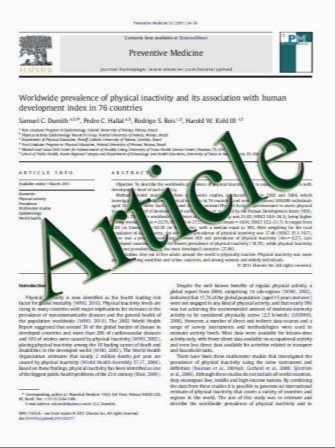Study of patients with Hyper-IgM type IV phenotype who recovered spontaneously during late childhood and review of the literature
- نوع فایل : کتاب
- زبان : انگلیسی
- مؤلف : Neslihan Edeer Karaca & Anne Durandy & Nesrin Gulez & Guzide Aksu & Necil Kutukculer
- چاپ و سال / کشور: 2011
Description
Hyper-IgM syndromes are characterized by normal or elevated serum IgM levels with the absence or reduced levels of other immunoglobulins. There are some patients with defective class-switch recombination (CSR) who do not have CD40L, CD40, AID, and UNG defects. The aim of this study is to determine the B-cell functions of patients with Hyper-IgM type 4 phenotype. Ten patients (seven males and three females) 84.2±16.5 months of age with initial low serum IgG and IgA and high or normal IgM levels were included. Clinically, 50% had recurrent upper respiratory tract, 10% urinary tract, 10% lower respiratory tract infections, and 30% had mixed type infections. Lymphoid hyperplasia, overt autoimmune manifestations, or malignancy was not noted. Seven of 10 patients were studied twice; at the age of 34.2±13.7 and at 86.6± 12.3 months. Absolute lymphocyte counts and lymphocyte subsets were normal in all cases. All of them had normal expression of CD40 on B cells and CD40L on activated T cells for males. At first examination, all patients had normal in vitro sCD40L+rIL-4-induced B cell proliferation response and somatic hypermutation but CSR towards IgE was absent. AID and UNG genes did not show any abnormalities. All showed improvement in both clinical findings and Ig levels during the follow-up period of 55.8± 14.8 months. Ages for normalization of IgG and IgA were 68.2±8.7 and 70.2±21.6 months, respectively. During the second evaluation: In vitro sCD40L+rIL-4-induced B-cell proliferation was normal in all cases, whereas CSR was still abnormal in five of eight patients. Two of the patients had an increase in in vitro CSR response but still low IgG2 subclass levels. Three patients with initially absent in vitro CSR response also normalized. Conclusion: Clinical manifestations and immunoglobulin levels of the patients with Hyper-IgM type 4 phenotype recovered in late childhood at about 6 years of age. There was a transient CSR defect which was not observed in cases with transient hypogammaglobulinemia of infancy. Detection of a non-AID or non- UNG associated CSR defect in infancy should be confirmed later on since spontaneous recovery may occur.
Eur J Pediatr (2011) 170:1039–1047 DOI 10.1007/s00431-011-1400-2, Received: 26 November 2010 / Accepted: 11 January 2011 / Published online: 28 January 2011


